|
Landowners
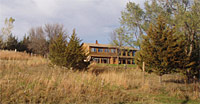 Jerry and Norma Wilson’s goal is to live a natural life leaving a small ecological footprint and improving their spot in the world. To this end, they built a geo–solar home in the summer of 1983 on the side of a hill amongst the Missouri River bluffs near Vermillion, South Dakota. The most striking feature about the home is the south facing wall of windows. “I can see to Nebraska,” says Norma, a retired University of South Dakota Professor. Jerry and Norma Wilson’s goal is to live a natural life leaving a small ecological footprint and improving their spot in the world. To this end, they built a geo–solar home in the summer of 1983 on the side of a hill amongst the Missouri River bluffs near Vermillion, South Dakota. The most striking feature about the home is the south facing wall of windows. “I can see to Nebraska,” says Norma, a retired University of South Dakota Professor.
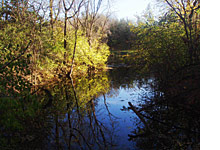
 Jerry, also a retired professor from Mount Marty College, as well as a retired managing editor of South Dakota Magazine, has chronicled the building of their home and restoration of their prairie in his eco-memoir “Waiting for Coyote’s Call”. The book is inspired by the works of Henry David Thoreau, Aldo Leopold, and Annie Dillard, and is rich with history and ecological philosophy. Jerry, also a retired professor from Mount Marty College, as well as a retired managing editor of South Dakota Magazine, has chronicled the building of their home and restoration of their prairie in his eco-memoir “Waiting for Coyote’s Call”. The book is inspired by the works of Henry David Thoreau, Aldo Leopold, and Annie Dillard, and is rich with history and ecological philosophy.
They have also spent years rehabilitating land that has suffered from erosion and infertility from overgrazing and poor stewardship. Jerry and Norma have planted more than 800 trees and shrubs on the top of the bluff as a wind break for their home, utilizing a combination of the maples, pines, Russian Olives, ash, lilacs, and honeysuckle. In addition, they have restored 30 acres to native prairie, replacing invasive brome grass with a mixture of 16 native grasses and wildflowers. They have also utilized prescribed burning to integrate the natural cycle. The difference between the burned and unburned acreages is startling, with the burned area being lush and thick with growth. “The natural prairie must have fired to keep healthy,” Jerry says.
 The Wilsons are continuing to expand the native prairie in the appropriate areas on their 144 acres. The benefits of reclaiming overused land are plentiful. Besides rejuvenating the soil and re-establishing habitats, it prevents erosion, keeping the soil from washing into waterways, which in turn improves water quality. This is important since two streams run through the property. In addition to the prairie and riparian area, the property includes woodlands which in the Wilsons refer to as the “Big Woods”, where they love to take moonlight strolls. The Wilsons are continuing to expand the native prairie in the appropriate areas on their 144 acres. The benefits of reclaiming overused land are plentiful. Besides rejuvenating the soil and re-establishing habitats, it prevents erosion, keeping the soil from washing into waterways, which in turn improves water quality. This is important since two streams run through the property. In addition to the prairie and riparian area, the property includes woodlands which in the Wilsons refer to as the “Big Woods”, where they love to take moonlight strolls.
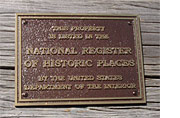 Taking care of the land is part of the Wilsons’ philosophy and a labor of love. By placing their property under a conservation casement donated to Northern Prairies Land Trust the Wilsons have permanently protected a wonderful and diverse area of native and restored habitat, rich with plant and animal life. The easement is appropriately named “Prairie Bluffs Conservation Easement”. Taking care of the land is part of the Wilsons’ philosophy and a labor of love. By placing their property under a conservation casement donated to Northern Prairies Land Trust the Wilsons have permanently protected a wonderful and diverse area of native and restored habitat, rich with plant and animal life. The easement is appropriately named “Prairie Bluffs Conservation Easement”.
(Northern Prairies would like to extend a special thanks to Elizabeth Hill who took the photos on this page and assembled a wonderful conservation baseline documenting the numerous conservation values of the Prairie Bluffs Conservation Easement.)
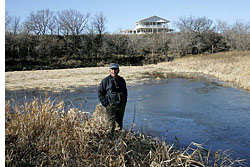 Gerhard Assenmacher's story is one of hard work and excellence. As a young man he came to the United States and founded a successful auto repair business in New York State. From that base, he gradually began to design and manufacture a line of specialty tools leading to the successful firm of Assenmacher Specialty Tools, Inc, based in Boulder, Colorado. www.asttool.com After gradually relinquishing his business interests to others, Gerhard did not slow down but rather, in succession, became an award-winning gardener, accomplished wildlife photographer www.photosbygerhard.com and exemplary land and water conservationist. In fact, Gerhard’s bird photographs are captured in Northern Prairies’ Bird Identification Quiz on our Home page. Gerhard Assenmacher's story is one of hard work and excellence. As a young man he came to the United States and founded a successful auto repair business in New York State. From that base, he gradually began to design and manufacture a line of specialty tools leading to the successful firm of Assenmacher Specialty Tools, Inc, based in Boulder, Colorado. www.asttool.com After gradually relinquishing his business interests to others, Gerhard did not slow down but rather, in succession, became an award-winning gardener, accomplished wildlife photographer www.photosbygerhard.com and exemplary land and water conservationist. In fact, Gerhard’s bird photographs are captured in Northern Prairies’ Bird Identification Quiz on our Home page.
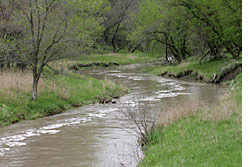 Gerhard's Medicine Creek Wildlife Refuge is comprised of more than 550 acres of native prairie and rich bottomland in Frontier County, Nebraska. It surrounds Medicine Creek, a principal tributary of the water-short Republican River, and is one of the few protected properties in the Mixed Grass Prairie Ecoregion, which has been designated as a Natural Legacy Area by the Nebraska Game & Parks Commission. Gerhard's Medicine Creek Wildlife Refuge is comprised of more than 550 acres of native prairie and rich bottomland in Frontier County, Nebraska. It surrounds Medicine Creek, a principal tributary of the water-short Republican River, and is one of the few protected properties in the Mixed Grass Prairie Ecoregion, which has been designated as a Natural Legacy Area by the Nebraska Game & Parks Commission.
This threatened Ecoregion is a transition zone where the tallgrass and shortgrass prairie merge, resulting in highly diverse species. Key stress points in the region are streambed alteration and degradation, as well as conversion of prairie to cropland. By protecting the rich riparian ground along Medicine Creek along with the surrounding grassland, the Medicine Creek Wildlife Refuge is a key building block in protecting both plant and animal species. For example, Gerhard has personally identified more than 100 bird species on the property.

In 2006 Gerhard Assenmacher donated a conservation easement on his property to Northern Prairies Land Trust, assuring continued protection of the rich conservation values found there.

|